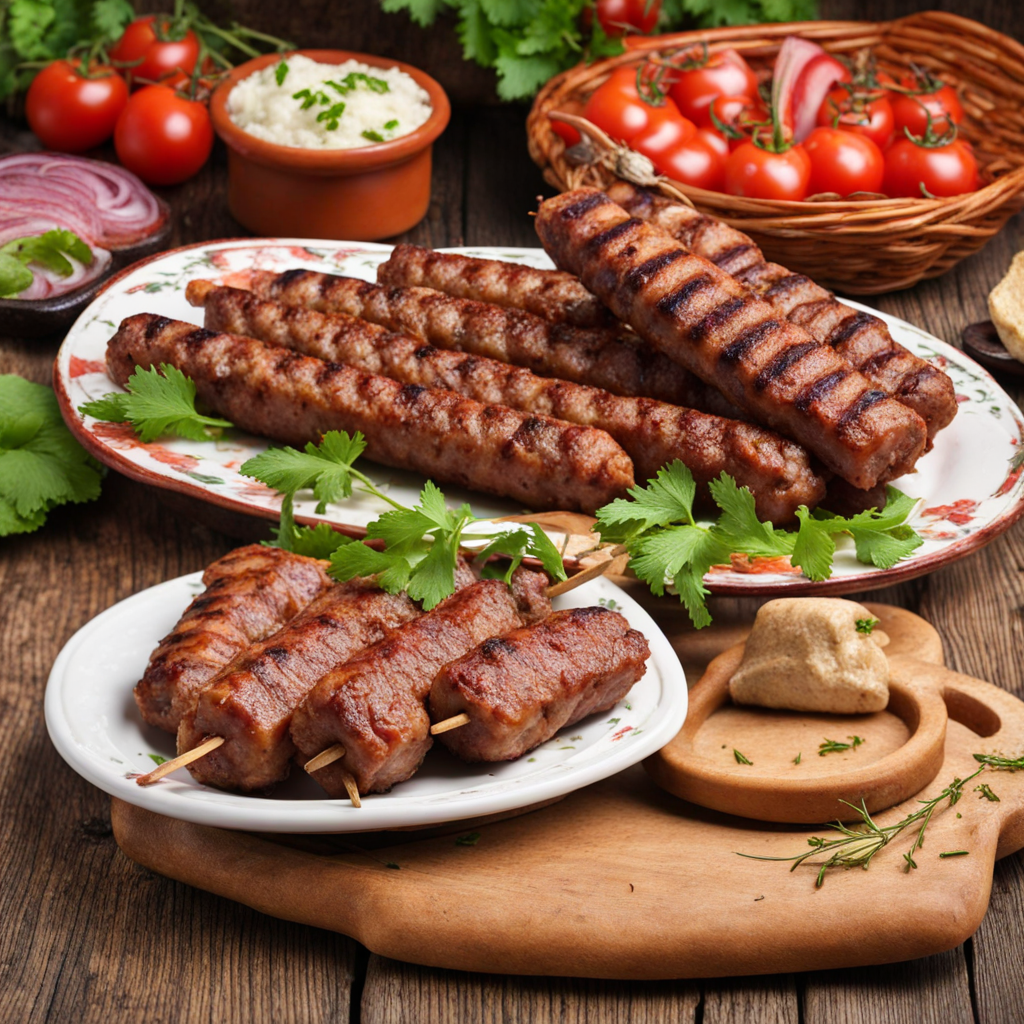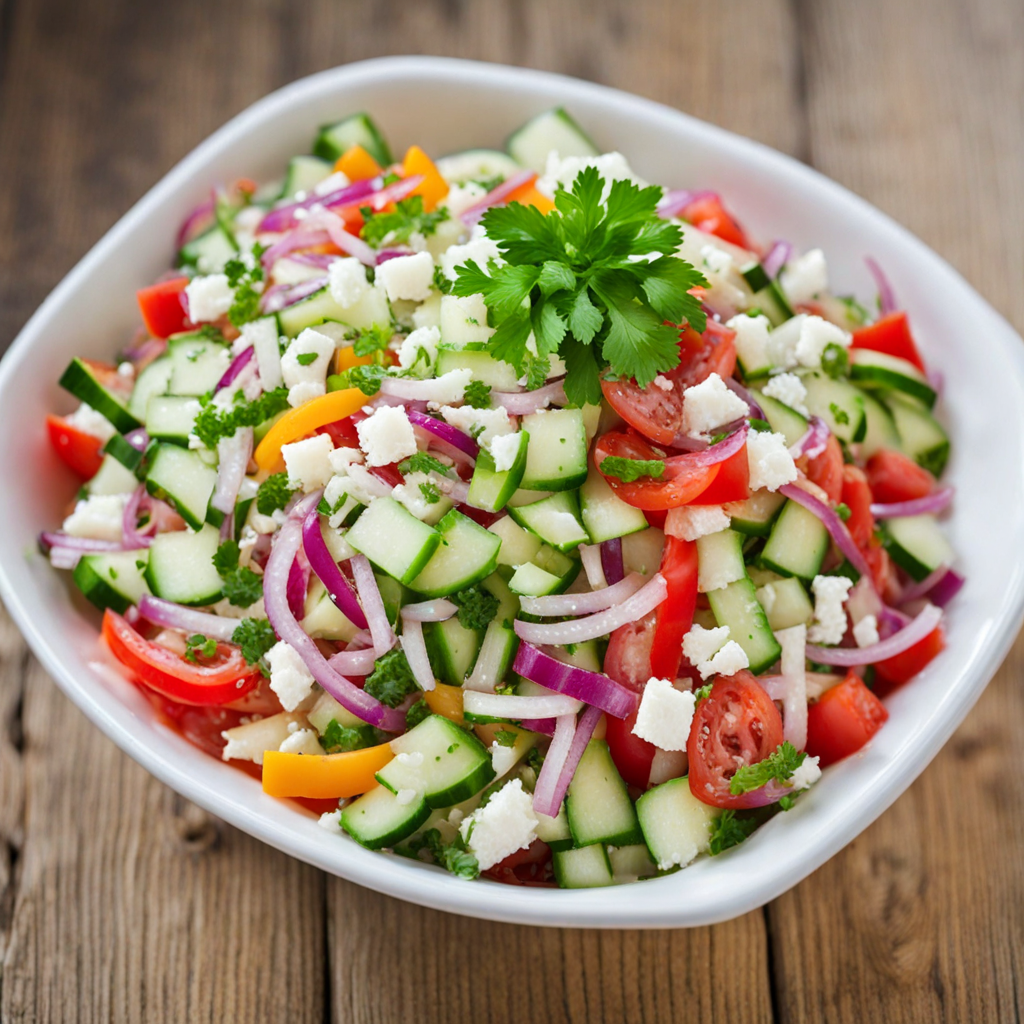Kebapche
Kebapche is a delightful Bulgarian dish that showcases the country's rich culinary heritage. This savory treat consists of ground meat, typically a mixture of pork and beef, seasoned with a blend of spices such as black pepper, cumin, and salt. The meat is shaped into long, cylindrical patties, resembling sausages, and is often grilled to perfection. The grilling process not only enhances the flavors but also imparts a tantalizing smoky aroma that entices anyone nearby. Kebapche is usually served hot, often accompanied by a side of fresh bread, chopped onions, and a sprinkle of parsley, making it a popular street food choice as well as a staple in Bulgarian households. The texture of Kebapche is key to its appeal; the exterior is slightly crispy from the grill, while the interior remains juicy and flavorful. Each bite bursts with a harmonious balance of spices, creating a delightful experience for the palate. Many Bulgarians enjoy their Kebapche with a dollop of tangy yogurt or a side of traditional shopska salad, which adds a refreshing contrast to the rich meat. The dish is not only satisfying but is also a great way to experience the vibrant flavors that characterize Bulgarian cuisine. Kebapche is often enjoyed during gatherings, celebrations, and barbecues, making it a dish that brings people together. Its widespread popularity in Bulgaria means that you can find Kebapche served at casual eateries, upscale restaurants, and food festivals alike. Whether you're tasting it for the first time or savoring a familiar favorite, Kebapche is a must-try for anyone seeking to broaden their culinary horizons with a taste of Bulgaria's delicious offerings.
How It Became This Dish
The History of Кебапче: A Culinary Gem of Bulgaria #### Origins Кебапче (kebapche), a beloved Bulgarian dish, is a type of grilled sausage made primarily from minced pork, beef, or a combination of the two, seasoned with a blend of spices, including black pepper, cumin, and salt. The origins of kebapche can be traced back to the rich culinary traditions of the Balkans, where various forms of spiced meat have been enjoyed for centuries. The word "kebap" itself has roots in Middle Eastern languages, referring to meat cooked on a skewer or over an open flame, and reflects the region's shared gastronomic heritage. The first mentions of meat grilling in the Balkans date back to the Ottoman Empire, which ruled over Bulgaria for nearly five centuries (1396-1878). During this period, culinary exchanges flourished, leading to the introduction of various spices and cooking techniques that would influence Bulgarian cuisine. The kebab, as it was known, became a staple among the local population, evolving into the kebapche we know today. #### Cultural Significance Kebapche is more than just a dish in Bulgaria; it embodies the spirit of conviviality and tradition. It is often associated with summer gatherings, barbecues, and communal meals, where friends and family come together to enjoy good food and company. This dish is a common feature at celebrations, festivals, and national holidays, reflecting its integral role in Bulgarian culture. The preparation of kebapche is a communal affair, typically involving the participation of family members who gather to mix the meat, seasonings, and sometimes even craft the sausages. This collaborative process fosters a sense of community and belonging, making kebapche a symbol of togetherness. In Bulgaria, kebapche is often served with side dishes such as shopska salad (a fresh salad made with tomatoes, cucumbers, peppers, onions, and feta cheese) and baked or fried potatoes. It is also commonly accompanied by a glass of rakia, a traditional Bulgarian grape or plum brandy, further enhancing the social experience. #### Development Over Time As Bulgaria transitioned into the 20th century, kebapche continued to evolve, reflecting changes in societal norms, agricultural practices, and culinary preferences. The introduction of refrigeration and modern transportation methods allowed for greater accessibility to high-quality meat, which helped elevate kebapche's status in Bulgarian cuisine. During the socialist period (1944-1989), kebapche became a symbol of national identity. Its popularity soared, and it found its way onto the menus of restaurants throughout the country. Street vendors began selling kebapche from carts, making it a convenient and affordable option for the working class. The dish became synonymous with the notion of "fast food" in Bulgaria, long before the global fast-food chains arrived. In the post-1989 era, after the fall of communism, Bulgaria experienced a culinary renaissance. Chefs and home cooks began to experiment with traditional recipes, incorporating modern techniques and flavors. While kebapche remained a staple, it also saw variations emerge, including vegetarian and gourmet versions. These adaptations reflect a growing awareness of health and sustainability, as well as a desire to cater to diverse palates. #### Regional Variations Within Bulgaria, regional variations of kebapche have developed, each with its unique twist on the classic recipe. In the southern regions, for example, kebapche may be made with a higher proportion of beef, while in the north, pork is more commonly used. Some areas may incorporate local herbs and spices that lend distinct flavors to the dish. Additionally, neighboring countries in the Balkans have their own versions of grilled minced meat, such as the Serbian ćevapi and the Bosnian cevapcici. These dishes share similarities with kebapche, yet each reflects the unique culinary influences and traditions of their respective cultures. The cross-border exchanges and shared history of the Balkans contribute to the rich tapestry of flavors found in kebapche and its regional counterparts. #### Kebapche Today In contemporary Bulgaria, kebapche continues to hold a special place in the hearts of locals and visitors alike. It is a staple at local restaurants, roadside grills, and markets, where it is often cooked over charcoal, imbuing the sausages with a distinct smoky flavor. The dish is not only a testament to Bulgaria’s culinary heritage but also a reflection of the nation’s evolving identity in an increasingly globalized world. The popularity of kebapche has also spread beyond Bulgaria's borders, with diaspora communities introducing the dish to new audiences. Festivals celebrating Bulgarian culture often feature kebapche as a highlight, showcasing its significance as a culinary ambassador of Bulgarian traditions. In recent years, the rise of gourmet and artisanal food movements has prompted chefs to experiment with kebapche, infusing it with innovative flavors and presentation styles. Some establishments offer kebapche made from organic, free-range meats, while others incorporate exotic spices or serve it in fusion dishes, blending traditional elements with contemporary culinary trends. #### Conclusion Kebapche, with its rich history and cultural significance, stands as a testament to Bulgaria’s culinary heritage. Rooted in the shared traditions of the Balkans and shaped by historical influences, this dish has evolved to reflect the changing landscape of Bulgarian society. Whether enjoyed at a family gathering, a festive celebration, or a casual meal, kebapche remains a beloved symbol of togetherness and a delicious reminder of Bulgaria’s vibrant food culture. As it continues to adapt and thrive, kebapche will undoubtedly remain a cherished dish for generations to come, inviting all who taste it to partake in its flavorful history.
You may like
Discover local flavors from Bulgaria







